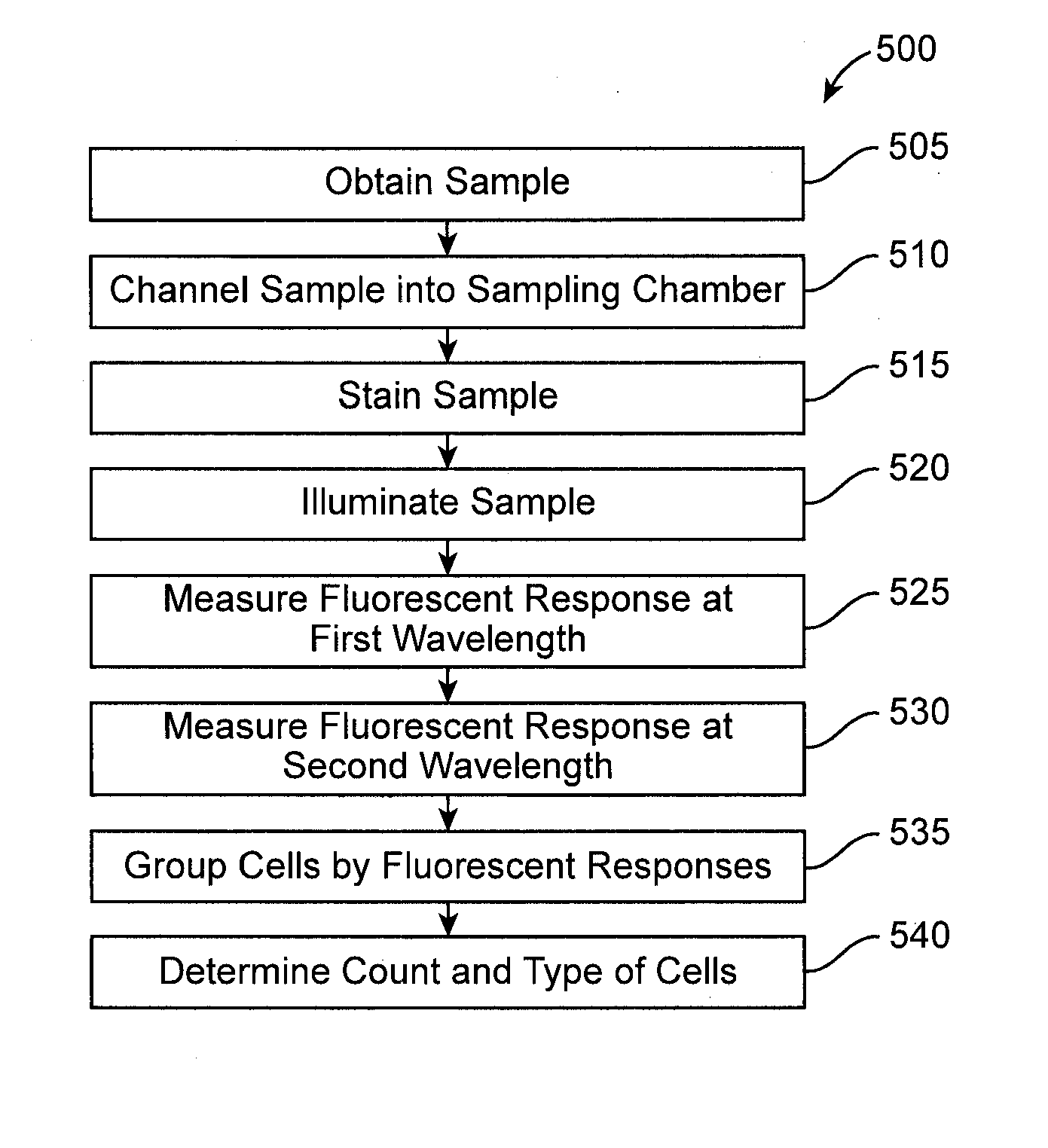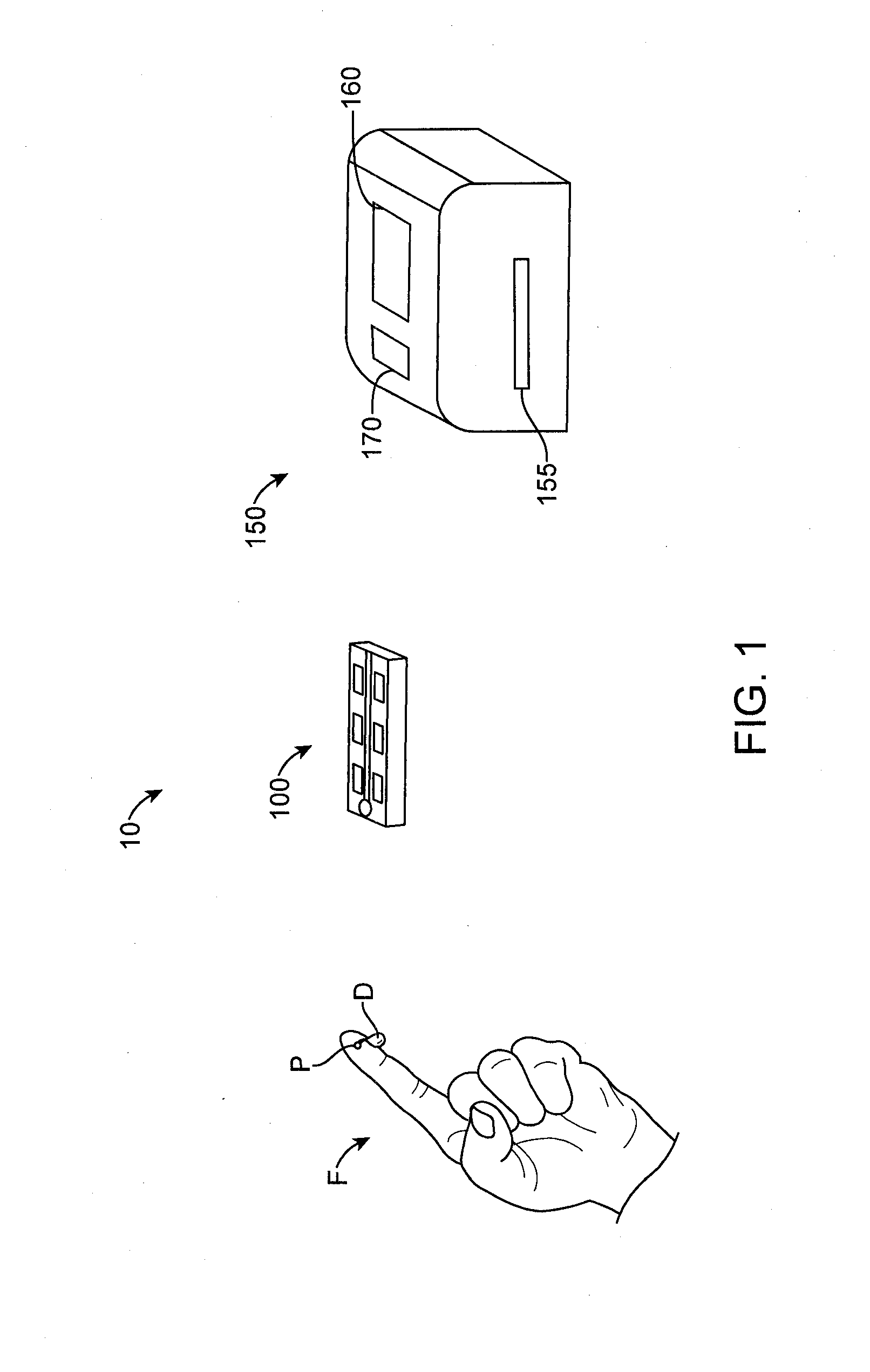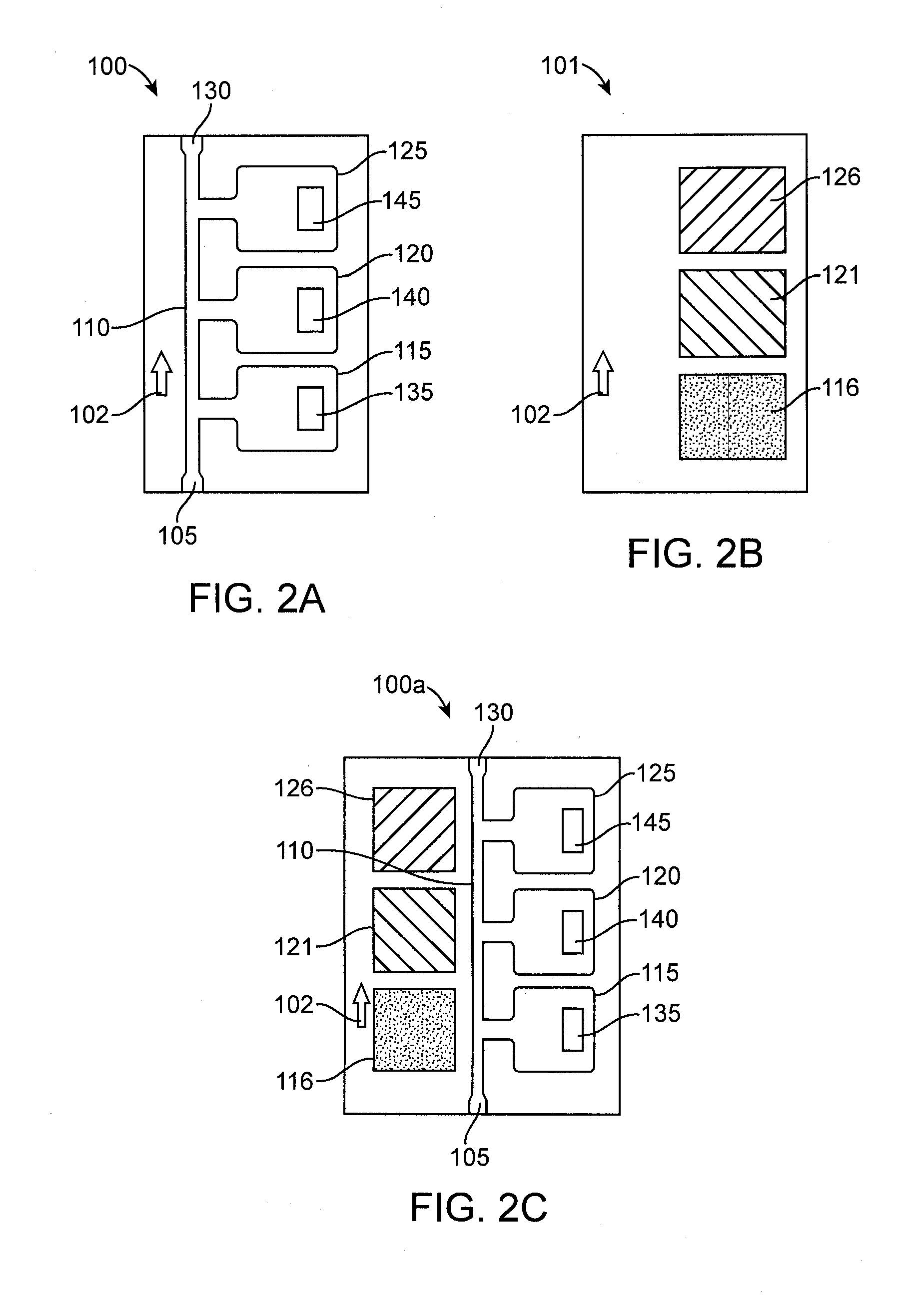Portable Blood Count Monitor
a portable, blood cell technology, applied in the field of medical devices, systems and methods, can solve the problems of manual counting being subject to sampling errors, certain abnormal cells in the blood may not be identified correctly, and the current cost of healthcare in the united states is a large and rapidly growing burden on the national economy. , to achieve the effect of convenient setup
- Summary
- Abstract
- Description
- Claims
- Application Information
AI Technical Summary
Benefits of technology
Problems solved by technology
Method used
Image
Examples
Embodiment Construction
[0050]Aspects of the invention provide improved devices, systems, and methods for performing blood count measurements. Various aspects of the invention described herein may be applied to any of the particular applications set forth below or for any other types of biological analysis systems. It shall be understood that different aspects of the invention can be appreciated individually, collectively, or in combination with each other.
[0051]1. System Overview
[0052]FIG. 1 shows a system 10 for performing blood count analysis. The system 10 comprises a blood collection and holding slide 100 and an automated portable slide analyzer 150. The automated portable slide analyzer 150 comprises a display 160 and a control panel 170.
[0053]The slide 100 will typically be relatively low in cost, be optically clear, and may comprise two optically clear glass, plastic, or polycarbonate substrates that may be separated by 4 to 100 microns with one hole for the insertion of blood. As shown in FIG. 1, ...
PUM
 Login to View More
Login to View More Abstract
Description
Claims
Application Information
 Login to View More
Login to View More - R&D
- Intellectual Property
- Life Sciences
- Materials
- Tech Scout
- Unparalleled Data Quality
- Higher Quality Content
- 60% Fewer Hallucinations
Browse by: Latest US Patents, China's latest patents, Technical Efficacy Thesaurus, Application Domain, Technology Topic, Popular Technical Reports.
© 2025 PatSnap. All rights reserved.Legal|Privacy policy|Modern Slavery Act Transparency Statement|Sitemap|About US| Contact US: help@patsnap.com



